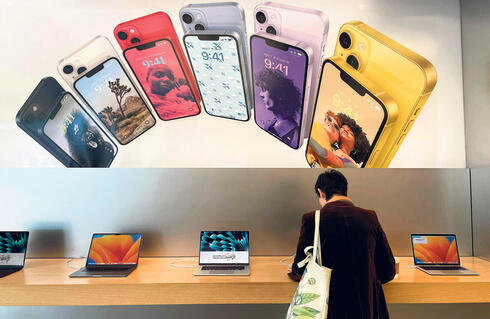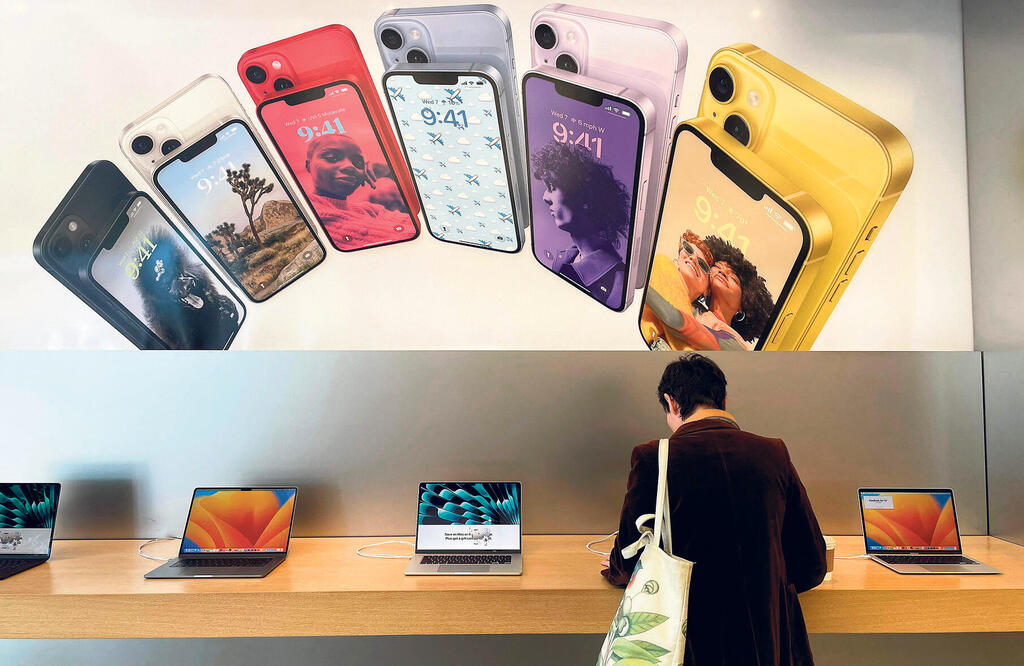
iPhone 15: Even a high price won’t stop Apple’s newest crown jewel
The new iPhone 15 models, to be unveiled by Apple today, are poised to become bestsellers, even if the price of the most expensive model reaches $1,200
Apple will introduce the iPhone 15 on Tuesday. As anticipated, these new devices are poised to boast a myriad of fresh capabilities and features. Expect a faster processor, an enhanced camera with optical zoom capabilities of up to x6, and more. However, alongside these upgrades, there's one surprise that fans may not be expecting: a price increase ranging from $100 to $200. Yet, these price adjustments aren't expected to deter consumers from embracing the latest iPhone model. Apple has consistently demonstrated that the iPhone's popularity and customer loyalty are unwavering, compelling customers to open their wallets for the newest iteration.
Apple is unveiling these new iPhone models against the backdrop of its robust position in the smartphone market. Over the past five years, the iPhone's relative share of global smartphone sales has been on an upward trajectory, notably fueled by increased sales in China, Japan, India, and Europe. Even in the U.S., Apple's largest market, the iPhone continues to thrive, commanding a 50% market share, compared to 41% in 2018.
This success story unfolds amidst a stark downturn in the rest of the smartphone market. Over the last two years, sales of Android devices have plummeted significantly, contributing to a 6.1% drop in overall sales volume. Predictably, the number of smartphones sold this year, approximately 1.15 billion units, is projected to be the lowest in a decade. Remarkably, Apple has only experienced a modest dip in iPhone sales, despite its devices being among the most expensive on the market, all during a global economic crisis.
According to an analysis by the New York Times, Apple's ability to weather the storm can be attributed not solely to device quality. Other companies like Google and Samsung produce equally successful smartphones, and some, like Samsung's foldable devices, may even be considered more innovative than the iPhone. The iPhone's enduring status is largely due to its associated business ecosystem. A robust market for second-hand iPhones enables many buyers to offset the cost of purchasing a new device by selling their old ones. Furthermore, cellular providers offer discounts and payment plans, making iPhone ownership more accessible.
Apple has also benefited from external events that have impacted its competitors, such as the case of Huawei. In the late 2010s, Huawei's rapid ascent knocked Apple from its second-place spot among the world's largest smartphone manufacturers. However, sanctions imposed on the company in 2020 significantly hindered its ability to produce advanced devices and severed its access to the U.S. market. Although Huawei recently introduced an advanced device based on domestically developed and manufactured chips, thus re-entering the premium device segment, the U.S. and other Western markets remain off-limits, posing a significant challenge to its recovery.
Another feather in Apple's cap has been its ability to attract young users, with 90% of teenagers in the U.S. now owning an iPhone. The device has become a must-have among many young consumers, to the extent that there is a social stigma associated with Android users.
Apple's closed ecosystem of devices and services also plays a crucial role, making it difficult for users to switch to other platforms. An iPhone seamlessly integrates with a Mac or iPad, allowing for tasks like transferring emails between devices or answering phone calls on a computer or iPad. Certain products, such as AirPods, achieve their full potential only when paired with an iPhone. This ensures that young users who choose an iPhone today are likely to remain within Apple's ecosystem for years or even decades, making any transition to Android a significant sacrifice.
However, Apple's stability is under threat from developments in China. While Huawei may not challenge iPhone sales in Western countries, it could erode Apple's market share in China, a crucial market both for product sales and as a global production hub.
Furthermore, a shift in government policy could pose a tangible threat. The central government in Beijing recently encouraged employees not to use iPhones at work and instead opt for devices from local manufacturers. While this isn't a full-blown boycott, it sends a clear signal that Beijing may alter its stance towards Apple, potentially harming the company's operations in China.
Apple is not the primary target in this scenario; it's likely a part of the broader trade war between the Biden administration and China, aimed at restricting China's access to chip technologies and advanced artificial intelligence. This move against Apple may serve as a signal to Washington, indicating that China could substantially impact one of America's largest companies if pressure isn't reduced. It might also pressure Apple to leverage its connections in the White House and Congress to persuade the administration to ease restrictions on China.
Despite these challenges, Apple has other markets it can tap into to offset potential declines in China, with India being a prominent example. Over the past decade, Apple has invested considerable effort in strengthening its presence in India, including opening local development centers, establishing Apple stores, relocating production capabilities to the country, and lobbying the government. These endeavors are bearing fruit, with Apple's market share of smartphone sales in India climbing from 1% in 2019 to 5% today, with a potential rise to 10% next year.
Collectively, these factors ensure that the iPhone 15 models are poised to become bestsellers, even if the price of the most expensive model reaches $1,200.














